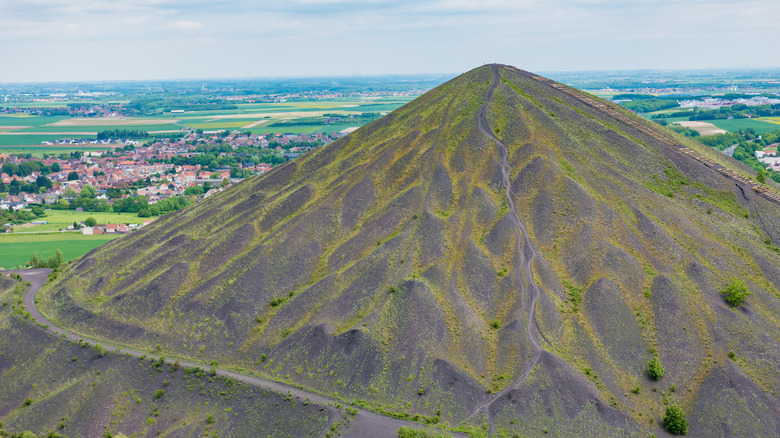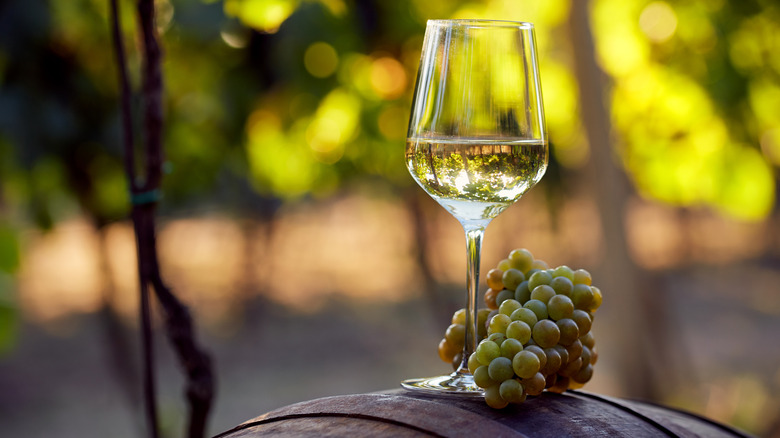The French Wine That's Being Grown On Top Of Coal Mining Waste
As far north as you can go in France, there's a region called Nord-Pas-de-Calais. It's nestled due west of Belgium, and it's subdivided into two departments, Nord and Pas-de-Calais. It's not known for its wine. In fact, tourism-geared Regions of France says, "The Nord-Pas-de-Calais region does not have great wines to offer," and Wine Regions of the World concurs. In fact, the region is much better known for its beer production and for wine-lovers, for its proximity to Burgundy and Champagne.
Traditional grape growing areas are having to be reconsidered, though. In the big picture, climate change threatens many of the areas once considered ideal for viticulture, and even short-term weather woes can force farmers to consider how and where grapes grow best. Nord-Pas-de-Calais may seem like an unlikely viticultural area, its flat landscape marked by enormous heaps of slag from three centuries of coal mining that, according to National Geographic, once supplied half of France's coal before the mines were closed, devastating the area's economy. What kind of wine could you possibly make here?
Charbonnay, of course
"Charbon" is the French word for coal, so "Charbonnay" is the perfect play on words for the first wine made in Pas-de-Calais. According to Connexion France, winemaker Olivier Pucek planted 2,000 vines in 2013, all on the steeply sloped sides of a slag heap near Haillicourt. His Chardonnay vines are hand tended and harvested, as the 18-degree slope of the vineyard is far too steep for machinery. The near constant breeze on the slag heap, coupled with the black soil that came from coal mining waste and heats up in the sunlight, makes an otherwise non-wine-producing region a new kind of viticultural opportunity.
The first bottles of Charbonnay were produced in Pas-de-Calais in 2018, albeit in tiny quantities. Reuters reports, however, that the blistering heat in 2022 should bump up grape production to three times the 2021 totals.
And how is the wine? It's rich and buttery, like many good Chardonnays, and Pucek told Connexion France that "In blind tastings, it compares well with white burgundies in the same price range." National Geographic points out that Pas-de-Calais' first slag heap vineyard is but one of the highlights in the recent development of green tourism in the area, which now boasts a satellite museum for the Louvre, running and cycling trails, and even a slag heap ski slope.

